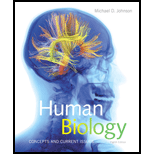
How do you feel about the creation and then sacrifice of an early- stage human embryo to produce stem cells for a transplant patient? Should it be permitted?
To review:
Ethical aspects of creation and sacrifice of an early-stage human embryo to produce stem cells for a transplant patient.
Introduction:
The cells that can differentiate into other different types of cells are known as stem cells. Apart from differentiating into different types of cells of the body, these cells can also divide to form new stem cells. This allows them to act as precursors for the production of different types of cells. Mammals contain two different types of stem cells, namely the embryonic as well as adult stem cells. The embryonic stem cells (ESCs) are obtained from a developing embryo. These cells have the ability to differentiate into all the different types of cells found in the body. However, the adult stem cells are more limited and can only differentiate into fewer types of body cells.
Due to the ability of embryonic stem cells to differentiate into all possible stem cells, they are a good target as a therapeutic agent for a transplant patient. They are able to create new healthy cells of the tissue or organ that needs to be transplanted.
Explanation of Solution
Embryonic stem cells offer a very promising solution to a number of diseases and medical conditions. It involves the production of an embryo and then destroying it to extract the embryonic stem cells. This offers many applications. However, there has been an ongoing debate about the ethical aspects of the sacrifice of a human embryo ever since this research began. People may argue that it is unethical to create an embryo and then sacrifice it. The argument states that as soon as the embryo is born, it is a living human and killing it would essentially be like murder.
Others might debate that killing at that stage is harmless as the embryo used is still in the early stages and has not differentiated. At that stage, it does not have an identity as a developed human being. They might also say that the benefit of using the stem cells for the treatment outweighs the harm that is caused by killing it. While some people might view it as abortion, others might think it is not the same since the embryo is at a relatively early stage of development.
It cannot be said what is right and what is not since ethical issues involve different perspectives and there is no right or wrong answer. The people, who think that sacrificing an embryo is right if it is being used for the treatment of diseases, support the use of embryonic stem cells. However, the people who do not believe in the sacrifice do not support the argument.
Research is being carried out to figure out ways to extract embryonic stem cells from early-stage embryos without actually killing them. This, if successful, might end the debate against using ESCs for transplant completely as the embryos would survive and live on.
Therefore, it can be concluded that the embryonic stem cells hold a great potential in the treatment of many diseases and in transplant patients. However, the aspect of creating and sacrificing an embryo raises ethical issues. People support and deny the argument based on their perspectives. A way, if derived to extract embryonic stems without destroying the embryo, the debate might get dissolved completely.
Want to see more full solutions like this?
Chapter 17 Solutions
Human Biology: Concepts and Current Issues (8th Edition)
- Describe three cranial and postcranial features of Neanderthals skeletons that are likely adaptation to the cold climates of Upper Pleistocene Europe and explain how they are adaptations to a cold climate.arrow_forwardBiology Questionarrow_forward✓ Details Draw a protein that is embedded in a membrane (a transmembrane protein), label the lipid bilayer and the protein. Identify the areas of the lipid bilayer that are hydrophobic and hydrophilic. Draw a membrane with two transporters: a proton pump transporter that uses ATP to generate a proton gradient, and a second transporter that moves glucose by secondary active transport (cartoon-like is ok). It will be important to show protons moving in the correct direction, and that the transporter that is powered by secondary active transport is logically related to the proton pump.arrow_forward
- drawing chemical structure of ATP. please draw in and label whats asked. Thank you.arrow_forwardOutline the negative feedback loop that allows us to maintain a healthy water concentration in our blood. You may use diagram if you wisharrow_forwardGive examples of fat soluble and non-fat soluble hormonesarrow_forward
- Just click view full document and register so you can see the whole document. how do i access this. following from the previous question; https://www.bartleby.com/questions-and-answers/hi-hi-with-this-unit-assessment-psy4406-tp4-report-assessment-material-case-stydu-ms-alecia-moore.-o/5e09906a-5101-4297-a8f7-49449b0bb5a7. on Google this image comes up and i have signed/ payed for the service and unable to access the full document. are you able to copy and past to this response. please see the screenshot from google page. unfortunality its not allowing me attch the image can you please show me the mathmetic calculation/ workout for the reult sectionarrow_forwardIn tabular form, differentiate between reversible and irreversible cell injury.arrow_forwardhelparrow_forward
- Can you please help me answer these questions?arrow_forwardSkryf n kortkuns van die Egyptians pyramids vertel ñ story. Maximum 500 woordearrow_forward1.)What cross will result in half homozygous dominant offspring and half heterozygous offspring? 2.) What cross will result in all heterozygous offspring?arrow_forward
 Human Heredity: Principles and Issues (MindTap Co...BiologyISBN:9781305251052Author:Michael CummingsPublisher:Cengage Learning
Human Heredity: Principles and Issues (MindTap Co...BiologyISBN:9781305251052Author:Michael CummingsPublisher:Cengage Learning Biology (MindTap Course List)BiologyISBN:9781337392938Author:Eldra Solomon, Charles Martin, Diana W. Martin, Linda R. BergPublisher:Cengage Learning
Biology (MindTap Course List)BiologyISBN:9781337392938Author:Eldra Solomon, Charles Martin, Diana W. Martin, Linda R. BergPublisher:Cengage Learning Biology: The Unity and Diversity of Life (MindTap...BiologyISBN:9781305073951Author:Cecie Starr, Ralph Taggart, Christine Evers, Lisa StarrPublisher:Cengage Learning
Biology: The Unity and Diversity of Life (MindTap...BiologyISBN:9781305073951Author:Cecie Starr, Ralph Taggart, Christine Evers, Lisa StarrPublisher:Cengage Learning





